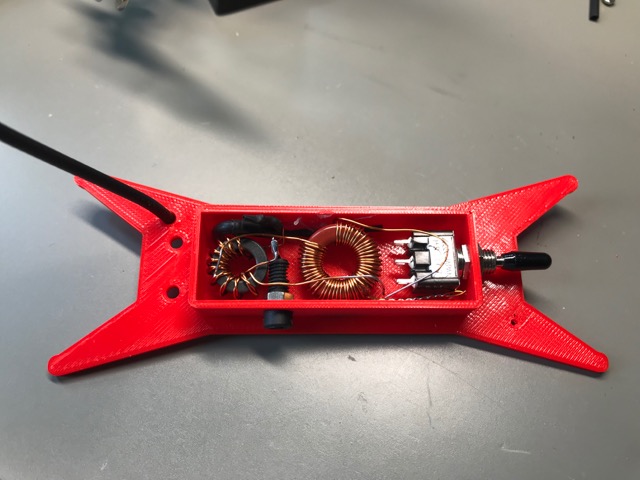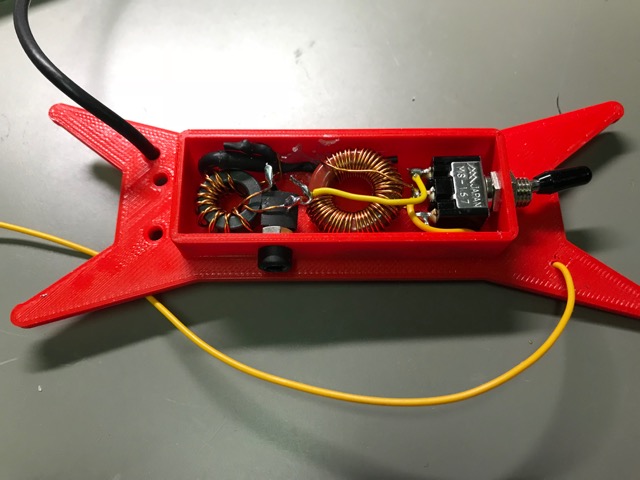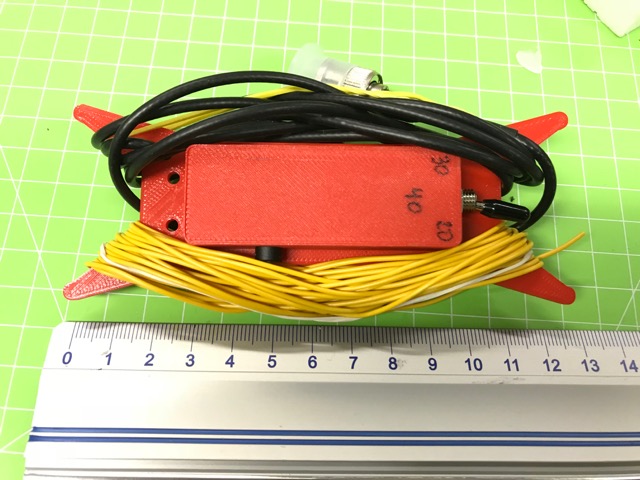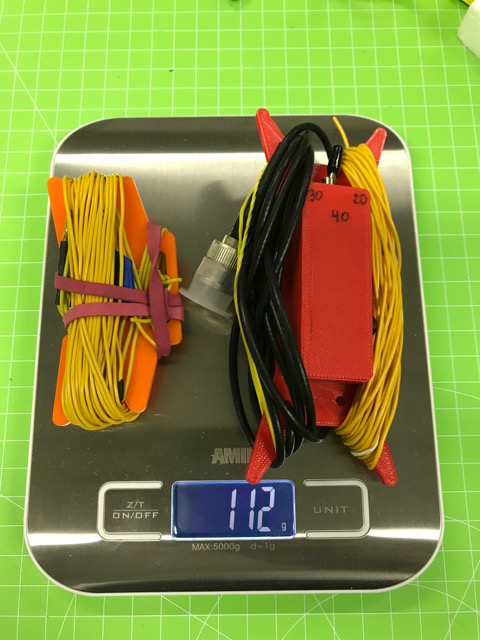Hi all:
Over the weekend, I optimized my variant of the antenna design and created a custom 3d-printable enclosure and winder.
All materials and instructions are here: Superlight SOTA Vertical for 40-30-20m with Loading Coil by mfhepp - Thingiverse
The main differences are as follows:
- I use one single, tapped T68-2 core instead of two to obtain the required inductances for 40 and 30 m.
- Instead of two SPST slide switches, I use a single SPDT 3-pole on-off-on switch, as proposed by Heinz, @HB9BCB.
- I added a common mode choke in order to reduce the effect of unavoidable asymmetries between the radiator and the counterpoise.
- Instead of four 10 ft. ground radials, my design can also be used with
a) one elevated, resonant radial, tuned for each band by winding up the remaining wire, or
b) three elevated, resonant radials attached to each other. - The enclosure is also a winder, same as with Packtenna antennas.
I have not yet tuned this one, because it is just too cold outside right now ![]()
Enjoy!
73 de Martin, DK3IT
Edit: The details of the tapped loading coil are as follows: With 0.5mm magnet wire, wind 25…26 turns, then add a short tap, then another 20…21 turns. Leave at least 10 cm on either end so that you can adjust the tap by adding a turn on one side and removing one on the other. Now tune the loading coil with a component tester or other device for measuring inductances. The total coil should have 11.5 - 12 uH, the 25…26 turns should have 3.4 - 3.6 uH. It is important to shorten the rest of the coil (i.e. the 20…21 turns) while measuring the inductance of the lower 25…26 turns. The 0.5 mm wire fits on the T68-2 core and should be thick enough for high efficiency and QRP levels.



